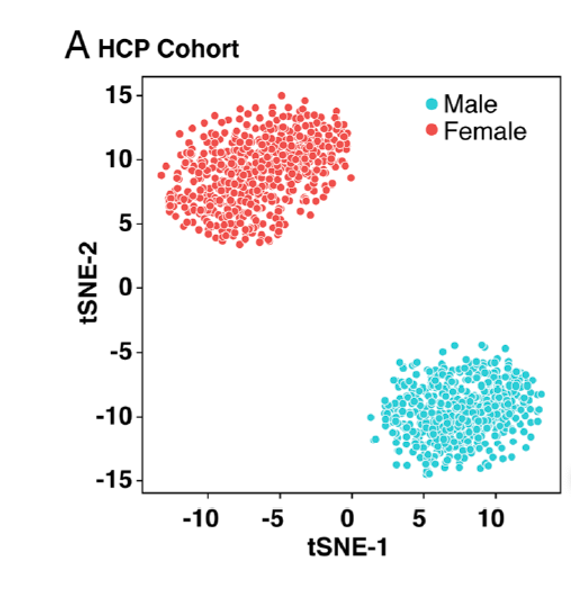Highlights
- There are hardwired female/male differences, and those differences matter. Ignoring reality is never best practice. Post This
- The male/female distinction is...a biological reality, manifest in the organization of the human brain prior to birth, as a new study shows. Post This
- A lack of awareness about the hardwired female/male differences has had the unintended consequence of disengaging boys from school and the real world. Post This
Western civilization has a more than 2,000-year history of men asserting that men and women are different and that men are better. In ancient Greece, Aristotle asserted that the world is binary: there is Good and Evil, Light and Dark, Straight and Curved, Male and Female. Aristotle explicitly equated women with Dark, Curved, and Evil. American women did not gain the right to vote until 1920 and did not have the right to serve on federal juries until 1957. As recently as 1973, there were states that still did not allow women to serve on juries. It was still common for a married woman in the U.S. to be denied a loan, or even the opportunity to open a checking account in her own name, unless she first obtained her husband’s permission. The husband didn’t need his wife’s permission, but the wife had to get her husband’s permission. That practice was only outlawed in 1974 with the passage of the Equal Credit Opportunity Act. There is a long history of men claiming that men and women are different, and using those claims of difference to justify discrimination against women.
For much of recent history, many people have believed that the best way out from that troubling legacy is to insist that gender doesn’t matter, that there are no hardwired differences between male and female.* In the past 30-some years, some have gone further, denying even the reality of the male/female dichotomy. In 1990, Berkeley professor Judith Butler asserted that gender is entirely a social construction, a performance: “because gender is not a fact, the various acts of gender create the idea of gender, and without those acts, there would be no gender at all.” For this insight, she has been rewarded with an avalanche of scholarly honors and prizes, including the Mellon Prize, which carries with it a $1.5 million cash award. (By comparison, the Nobel Prize gets you just $1.1 million.) In my visits to more than 500 schools over the past 23 years, I have found that many schools now embrace Butler’s view of gender-as-performance. These schools actively “problematize” and “deconstruct” the male/female dichotomy. Some school districts now even discourage the use of the words “boys” and “girls” on the grounds that those words reinforce the heteronormative binary. And the phrase “ladies and gentlemen” is even more offensive to some.
I am sympathetic to these concerns. I know the history of Western sexism going back to Aristotle. I want my daughter to have the same opportunities as any boy. The problem is that there are hardwired female/male differences, and those differences matter. Ignoring reality is never best practice.
In fact, researchers at Stanford recently used artificial-intelligence methods to examine brain activity in roughly 1,500 young adults 20 to 35 years of age. Neuroscientists have known for many years that every human brain is characterized by a “fingerprint” of brain activity at rest, unique to that individual. The Stanford neuroscientists used big-data AI techniques to determine the fingerprint of every one of those young adults. They then compared women with men.
Did women differ from men? Was there significant overlap?

Source: Creative Commons CC BY-NC-ND license from Ryali et al 2024.
Take a look at the graph. The women’s fingerprints of resting brain activity are quite different from the men’s, with no overlap. These findings strongly suggest that what’s going on in a woman’s brain at rest is different from what’s going on in a man’s brain at rest.
The Stanford team then mapped fMRI patterns of connectivity onto cognitive functions such as intelligence. They found particular patterns of connectivity within male brains that accurately predicted cognitive functions such as intelligence. However, that male model had no predictive power for cognitive functions in women. Conversely, they found patterns of connectivity within female brains that predicted cognitive functions such as intelligence among women. However, that female model had no predictive power for cognitive functions in men. These findings strongly suggest that the determinants of intelligence in male brains are profoundly different from the determinants of intelligence in female brains.
Our challenge is to understand and indeed celebrate female/male differences while insisting on equal rights and equal opportunities for all girls and boys.
The Stanford researchers know all about previous studies suggesting small effect sizes, lots of overlap, and a continuum of male/female differences. They concluded that the failure of previous work to demonstrate these huge effects is due to the “weaker algorithms” employed in earlier research. They wrote:
Our results provide the most compelling and generalizable evidence to date, refuting this continuum hypothesis and firmly demonstrating sex differences in the functional organization of the human brain.
Gina Rippon, a critic of the Stanford study, recently noted that the youngest participants in the study were 20 years old, and all subjects were from the United States or Western Europe. She argued that means that all participants had at least 20 years of exposure to the putatively heteronormative Western patriarchy. As a result, “just knowing that the brains come from young female adults as opposed to young male adults will never give us the full picture of where any differences came from.” Are the differences hardwired, or socially constructed? Nature or nurture? If gender is just a performance, then, 20 years of performing may have changed the brains to produce the differences found by the Stanford researchers.
The problem with this argument is that it disregards other previous studies with similar results showing male/female differences in brain connectivity, such as in the brains of babies prior to birth, as well as dramatic male/female differences in gene expression in the brains of babies prior to birth. These studies of the brains of babies still in their mothers’ wombs, and other studies like them, refute the claims made by Judith Butler and her disciples. The male/female distinction is not an arbitrary social construct. It is a biological reality, manifest in the organization of the human brain prior to birth.
But what does all of this have to do with parenting and family?
In my own experience as a family doctor, I’ve seen how important it is for parents, especially parents who have both a girl and a boy, to know about these hardwired girl/boy differences. At a well-child visit for her 18-month-old son, one mom shared her concerns about her son. “When my daughter was this age, she would babble a blue streak,” mom told me, explaining:
Lots of it was just nonsense baby talk, but I would answer her back, yabbity biddity boo, and stuff like that, and she would nod and talk back to me. We could go on like that for half an hour and just crack each other up laughing. I tried doing that with my son, and nothing. Just nothing. He doesn’t talk. I Googled it and a bunch of web sites said it could be a sign of autism.
I talked with this mom about individual differences. Some kids talk earlier than other kids, but this is especially true of girls versus boys. I mentioned a study from Cambridge University showing that the average girl at 18 months of age has a much larger vocabulary than the average boy the same age.
“Don’t compare your son to your daughter,” I said. “If you must compare your son to anybody, compare your son to other boys.” And it turns out, years later, that this boy does not have autism.
Parents need to know that girls mature faster than boys. A study of 829 MRI scans from individuals 3 to 27 years of age showed that girls reach the half-way point in brain development just before 11 years of age; boys, not until almost 15 years (see figure 2A in that study).
I have seen firsthand how the average girl has a longer attention span than the average boy, especially in elementary school. In my school visits, it has been common to find a 6-year-old boy who absolutely has to stand, bounce up and down, and make buzzing noises, in order to learn. As one first-grade teacher told me: “when that boy sits down, his brain shuts off.” It is rare to find a 6-year-old girl who has to move around in order to learn. But sex differences diminish as a function of age. It is unusual to find a 30-year-old man who absolutely has to stand, bounce up and down, and make buzzing noises, in order to learn. Unfortunately, by the time boys are eight years old, many boys have already decided that they’re dumb, that they hate school, and that the teacher likes girls better.
But boys are just as capable as girls are of excelling in school. That’s not a guess. As recently as 1994, boys outperformed girls in American schools, a fact lamented at the time by American University researchers Myra and David Sadker in their influential book Failing at Fairness: how America’s schools cheat girls. I recall the honors ceremony when I was a graduating senior at my public high school in Ohio back in 1977: almost all the students being honored were boys. The president of the student council was a boy. The editor of the school newspaper was a boy, as was the editor of the yearbook and the poetry magazine. The valedictorian and salutatorian were both boys. Last year, all those positions at my old high school were held by girls.
In my book Boys Adrift, I argued that the decline in boys’ achievement relative to girls is not the almost-inevitable result of modernity, as scholars such as Richard Reeves and Kay Hymowitz have argued. Instead, a lack of awareness of hardwired female/male differences has had the unintended consequence of disengaging boys from school and the real world. The best way to get boys back in the game is to educate parents and teachers about the reality of male/female differences. To (partially) quote the late Justice Ruth Bader Ginsburg: “inherent differences between men and women, we have come to appreciate, are cause for celebration...”
So, the challenge is to understand and indeed celebrate female/male differences while insisting on equal rights and equal opportunities for all girls and boys. This means, the opportunity for a boy to grow up to be a full-time stay-at-home father if that’s what he wants to be, and the opportunity for a girl to grow up to be an Army Ranger or a physicist if that’s what she wants. Let’s not ignore gender differences or pretend that they don’t exist. Let’s use our understanding of the emerging science of sex differences to boost motivation and outcomes for both boys and girls.
Leonard Sax MD PhD is a practicing family physician, PhD psychologist, and the author of Why Gender Matters: what parents and teachers need to know about the emerging science of sex differences. More information at www.leonardsax.com.
*Author's Note: Although the title of this piece states that gender differences are hardwired, I would like to emphasize that only some gender differences are hardwired. Each culture constructs gender somewhat differently, and the expression of gender varies significantly across cultures. But this new research clearly suggests that the claim that gender is entirely a performance cannot be accurate. At least some gender differences appear to be hardwired, related to innate female/differences that have been noted even before birth.













